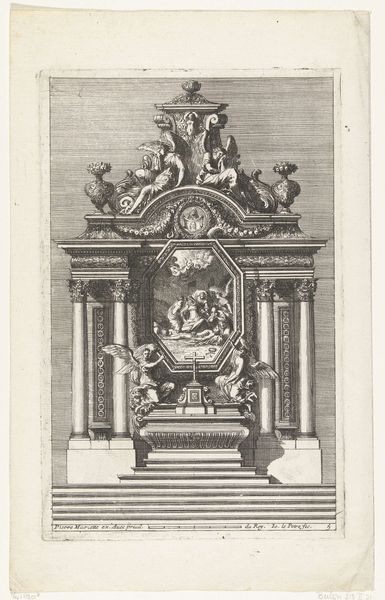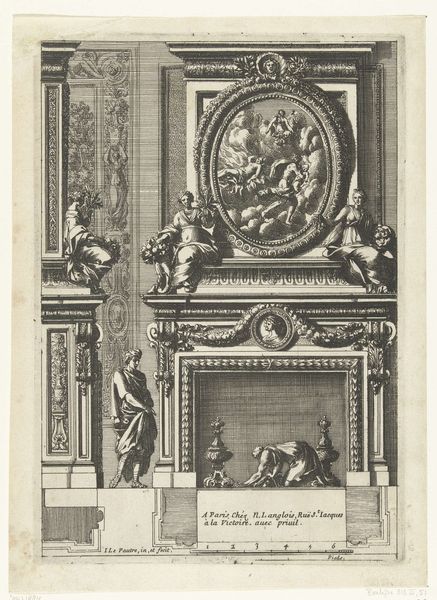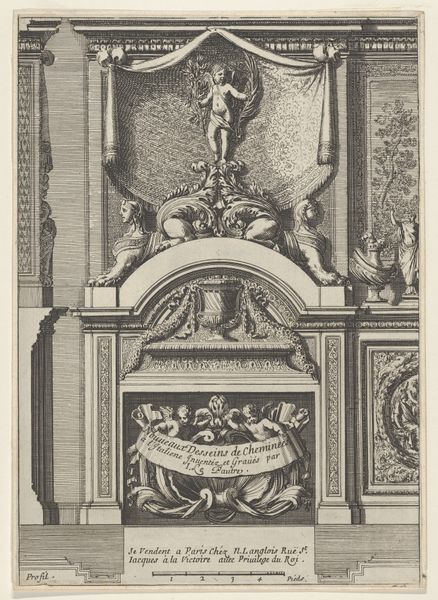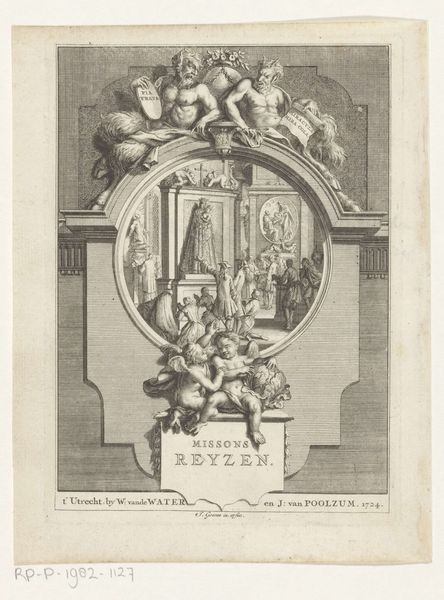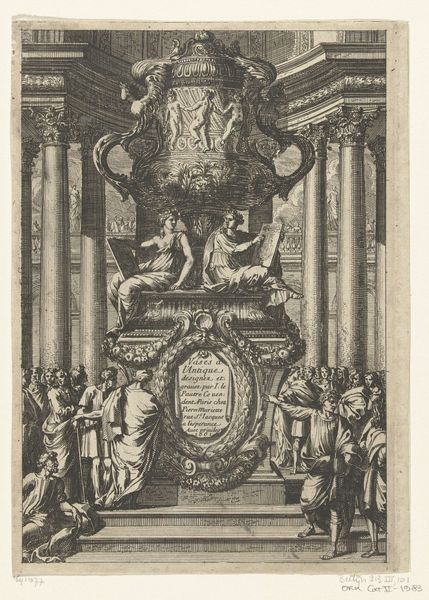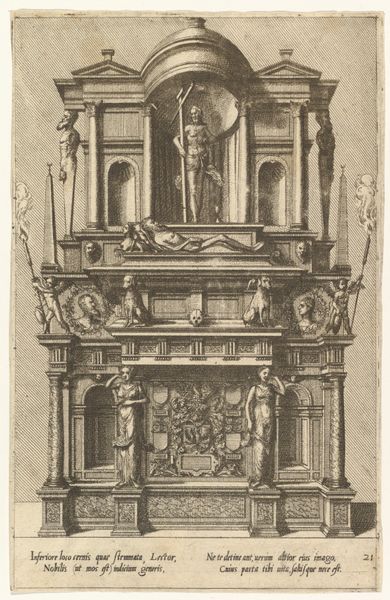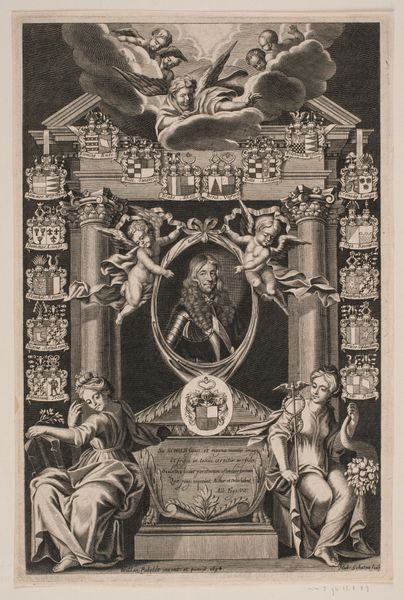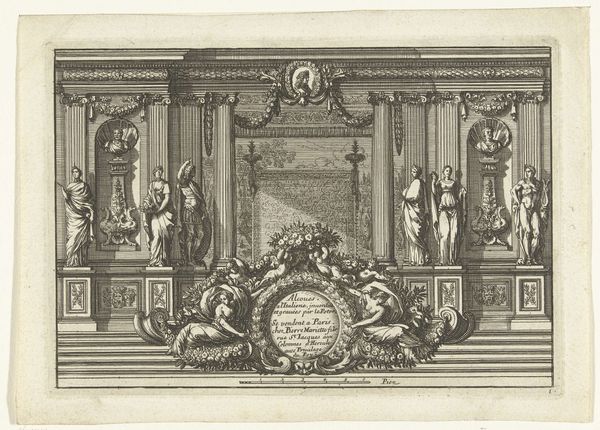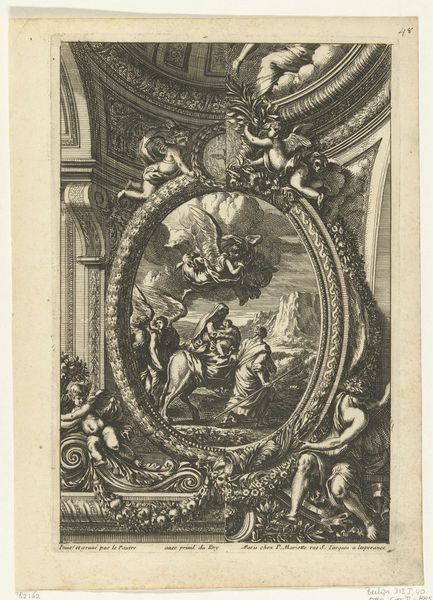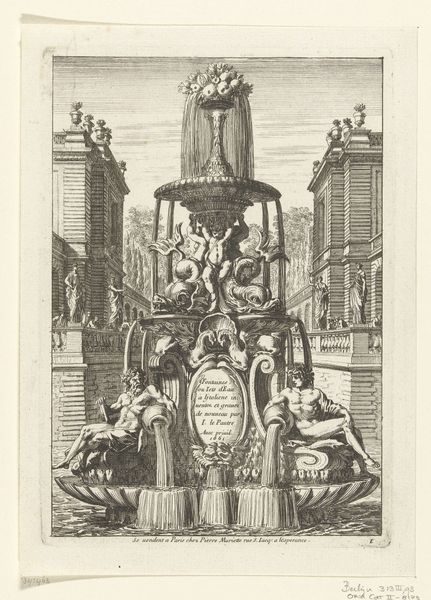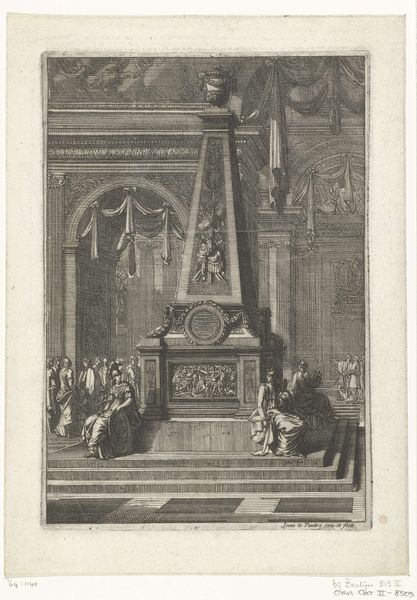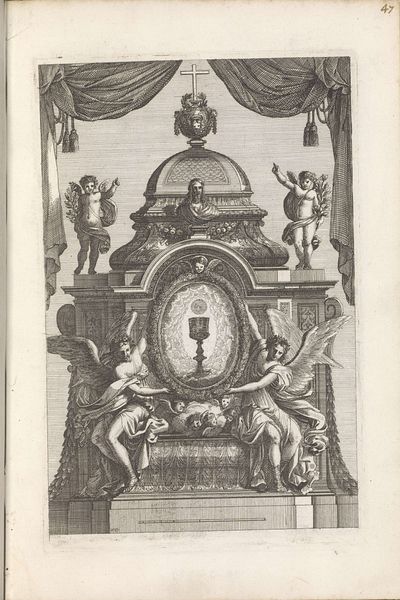
drawing, print, engraving, architecture
#
drawing
#
baroque
# print
#
old engraving style
#
personal sketchbook
#
history-painting
#
engraving
#
architecture
Dimensions: height 222 mm, width 152 mm
Copyright: Rijks Museum: Open Domain
Editor: Here we have Jean Lepautre’s “Titelblad: Nouueaux Dessins d'Autels à la Romaine,” dating from around 1658 to 1670. It's an engraving, giving us an elaborate image of an altar. It’s incredibly detailed and ornate; what do you see in it? Curator: What interests me here is the *production* of the image. This wasn't a painting for a wealthy patron, but an engraving intended for wider distribution. It makes me think about workshops and the labour involved in producing these "nouveaux dessins," these "new designs." Who was consuming them, and how were they using them? Editor: So, not just appreciating the aesthetic, but thinking about who made it, how, and for whom? Curator: Exactly. The print medium allowed for a specific type of consumption. These designs likely served as inspiration for local artisans or perhaps were collected as a visual catalogue of architectural trends. Consider the implications of these designs circulating – how did it influence the landscape of religious spaces at the time? Did this promote new tastes, or was it another channel for wealthy consumption? Editor: It’s almost like a DIY guide for altars! Were these accessible to your average church or just inspiring wealthier clients? Curator: Precisely! It opens a window into the economic realities of religious architecture and interior design in the 17th century. It points to the fascinating ways in which design ideas were disseminated and consumed, blurring the lines between "high art" and craft. The materiality of the print itself – the paper, the ink, the very act of engraving – became a vector for influencing the design and experience of sacred spaces. Editor: I’d never thought of it that way. Thinking about the circulation and consumption really changes my perspective. Curator: And that reframing allows us to reevaluate not just the image but the very system within which it was made and consumed. Editor: It makes me want to see what altars that may have used it as inspiration actually looked like!
Comments
No comments
Be the first to comment and join the conversation on the ultimate creative platform.
